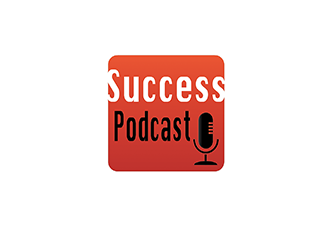By Verne Harnish & Mike Goldman
Successful leaders know they need to balance the needs of employees, customers, and shareholders to build a thriving company. Many firms excel at tracking key performance indicators (KPIs) like profits, as well as customer feedback on a weekly or daily basis, but they fall flat when it comes to monitoring employees’ morale—and it shows. New research by Gallup found that 52% of American workers are not engaged in their work, while another 18% are “actively disengaged.”
Many CEOs think that they can keep an eye on morale with annual employee survey, but that is like driving your car by only looking in the rearview mirror. By the time you get the results, most of the “accidents” have already happened: Grumpy employees have alienated good customers, incompetent managers have killed productivity, and the best talent has left for the competition. You need to measure employee happiness daily or weekly.
NEW ANALYTICS TOOLS
There are some cutting edge tools to help. Apple and Rackspace use the employee Net Promoter System (eNPS), a metric that is picking up traction, as Fred Reichheld, the intellectual father of NPS, mentions in his book The Ultimate Question 2.0. He has launched a new software-as-a-service (SaaS) tool that will make it possible for team leaders to drive weekly conversations about progress toward goals, constraints and priorities for keeping customers happy. It is now in beta testing. Stay tuned.
While the well-known NPS tracks customer loyalty, the eNPS measures employees’ happiness, asking them in a confidential survey: “On a scale of 0 to 10, how likely is it that you would recommend your workplace to a friend or family member?” Employees have room to comment, providing qualitative data, too.
Be prepared: The scores you get from your team are likely to be lower than you get from your customers on the traditional NPS. Employees tend to be tough critics—but if you’re willing to listen, they will tell you what you need to hear. At the same time, don’t obsess about your scores. The qualitative data is important, too.
Atlassian, an Australian software company, created an internal app called MoodApp (I love the name!) for iPads and scattered them throughout their headquarters, including one to the side of the elevator. On their way out, employees answer questions like “How are you feeling today?” and “Do you think Atlassian is a fun place to work?” A question about how much feedback people get from their managers uncovered deficits and triggered leadership development training to improve the situation.
Choosing a tool that will allow you to measure morale on your team daily, weekly or at other frequent intervals will help you keep levels of engagement high. TINYPulse, a cloud-based tool that sends out weekly survey emails, captures anonymous feedback from employees and offers tools to help management to visualize and analyze the data. When answering a “question of the week,” employees have space to add comments and suggestions.
One handy feature of TINYPulse is the ability to customize the questions you ask. One company I know lets employees come up with the weekly question–a technique that is worth considering.
TINYPulse also allows you to comment directly on suggestions and initiate a private, forum-like dialogue with the employee. Just make sure that you use the system in a way that does not violate employees’ anonymity, or they won’t want to use it anymore.
TALK WITH EMPLOYEES WEEKLY
New technologies are no substitute for meaningful conversations with your team. Senior leaders should formally visit with one employee each week and ask three simple questions: “What do we need to start doing, stop doing and keep doing?”
Then take a few minutes at the weekly management meeting to share what you’ve learned. This qualitative data, collected weekly, will give the senior team a real sense of what’s working and not working among the employees as patterns emerge over weeks and months of conversations.
Add to this feedback by looking at some KPIs such as absenteeism, attrition or tenure with the company, knowledge-sharing activities, training hours, or the number of kudos people give each other.
RESPOND TO FEEDBACK QUICKLY
Make sure that you have the management bandwidth to quickly respond to feedback. Gathering data is useless if you don’t act on it. Nothing is more frustrating than being asked your opinion and then seeing it ignored.
People, your most valuable asset, are intangible in accounting terms. Measuring their happiness is a way of making them tangible. It will be some time until this type of metric will appear on a balance sheet, but that doesn’t mean you should not pay attention to these measures. They’re some of the best leading indicators of a company´s overall health and value.





